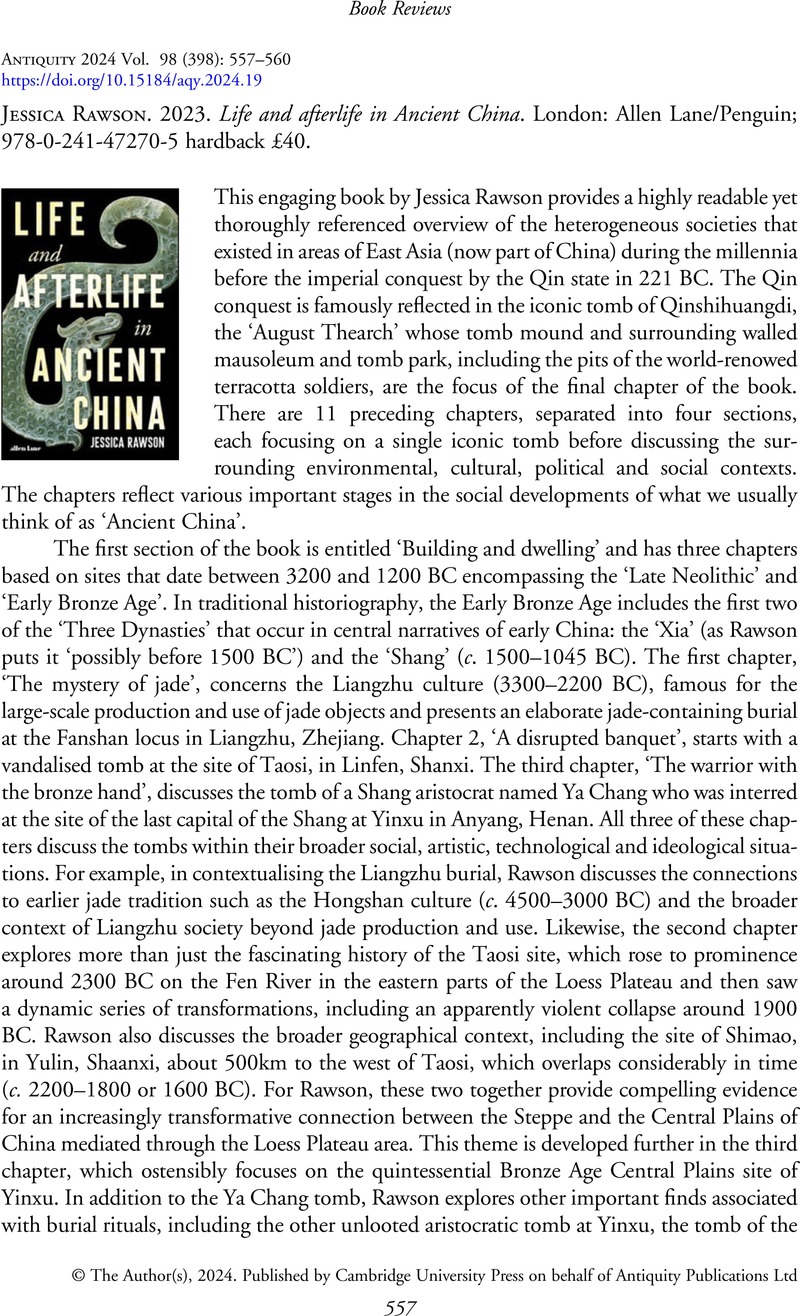No CrossRef data available.
Article contents
Jessica Rawson. 2023. Life and afterlife in Ancient China. London: Allen Lane/Penguin; 978-0-241-47270-5 hardback £40.
Review products
Jessica Rawson. 2023. Life and afterlife in Ancient China. London: Allen Lane/Penguin; 978-0-241-47270-5 hardback £40.
Published online by Cambridge University Press: 27 February 2024
Abstract
An abstract is not available for this content so a preview has been provided. Please use the Get access link above for information on how to access this content.

- Type
- Book Reviews
- Information
- Copyright
- Copyright © The Author(s), 2024. Published by Cambridge University Press on behalf of Antiquity Publications Ltd
References
Flad, R.K. 2002. Ritual or structure? Analysis of burial elaboration at Dadianzi, Inner Mongolia. Journal of East Asian Archaeology 3(34): 23–52.CrossRefGoogle Scholar
Li, Yue et al. 2021. Reply to Shelach-Lavi et al.: implications of the horse assemblages from Shirenzigou and Xigou. Proceedings of the National Academy of Sciences USA 118(16): e2025947118. https://doi.org/10.1073/pnas.2025947118Google ScholarPubMed
Sanxingdui [Sanxingdui Yizhi Jisiqu Kaogu Gongzuodui 三星堆遗址祭祀区考古工作队]. 2022. Sichuan Guanghan shi Sanxingdui yizhi jisiqu 四川广汉市三星堆遗址祭祀去 (The sacrificial precinct of Sanxingdui in Guanghan City, Sichuan). Kaogu 考古 [Archaeology] 2022(7): 15–33.Google Scholar


